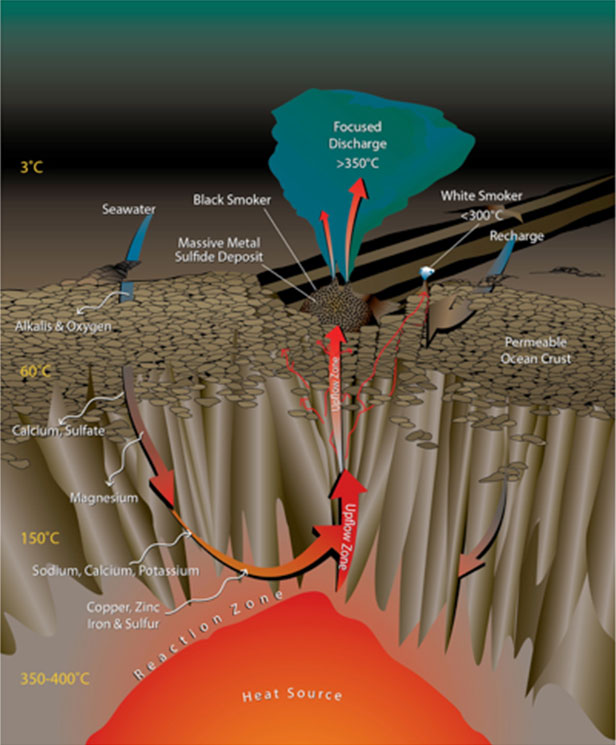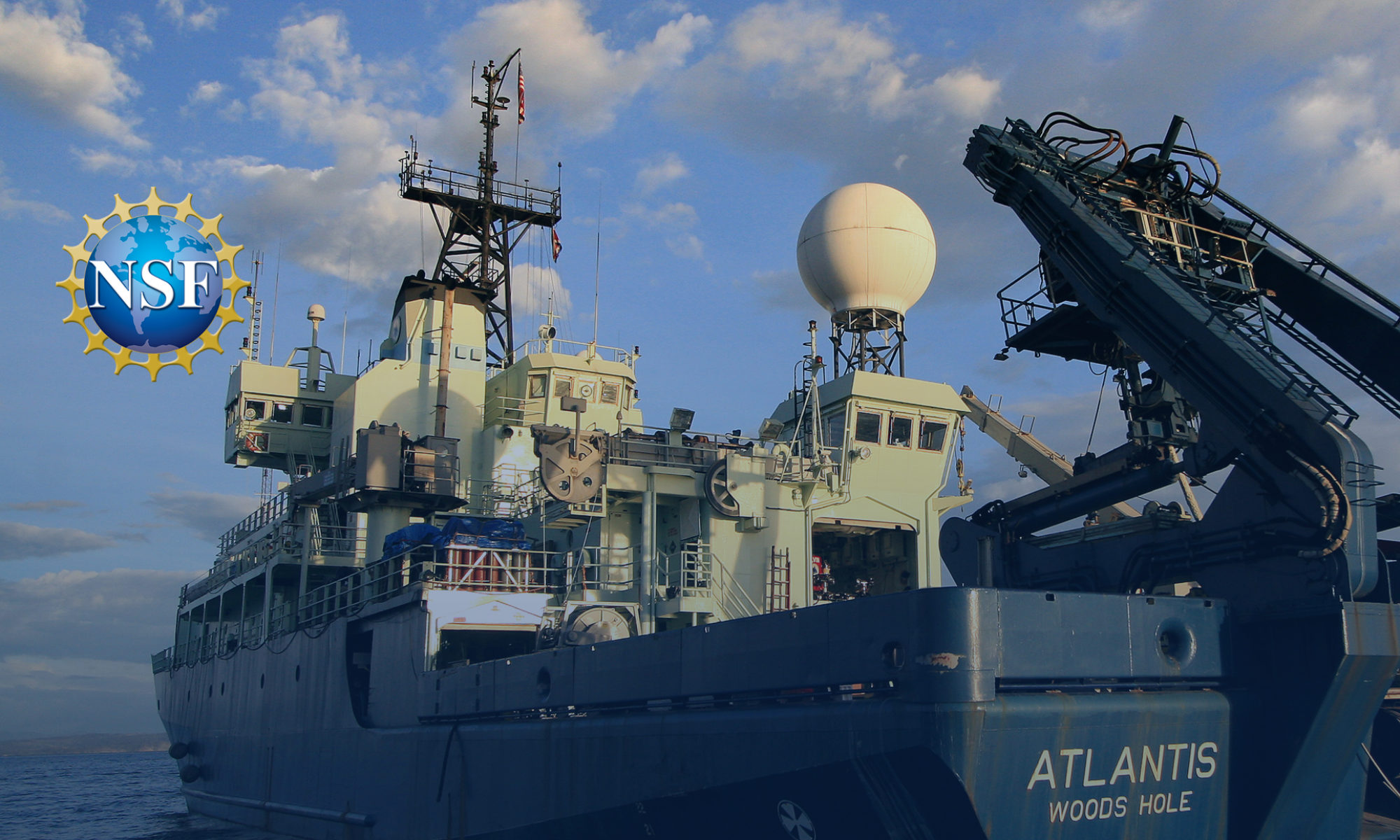
Post by: Aida Farough, Kansas State University
Hydrothermal systems are an important component of Earth’s “heat engine,” and account for approximately 25 percent of the planet’s total heat loss. They also provide important pathways for heat and chemicals to travel from inside the Earth to the ocean and the crust.
Within a hydrothermal system, seawater percolates down into the crust, as it is heated by magma, it reacts with oceanic crust and changes composition, then rises back to the seafloor, where it forms high-temperature black smoker vents, as well as lower-temperature diffuse flows (see figure 1). Heat is the primary driver of this system, and it also helps support life near hydrothermal vents. Despite its’ importance, measurements of the heat output of seafloor hydrothermal systems at mid ocean ridges, have been very limited.

My research deals with three very simple things: water, rocks, and heat. But for most of my career, I’ve dealt with these things in a conceptual way—I create models of the way heat and fluids move through the rocks beneath the seafloor and are influenced by such variables as the permeability of the seafloor, the rate at which magma is replenished after an eruption, and the length of time seawater remains beneath the seafloor before flowing back into the ocean. I have also “cooked rocks” in the lab, to resemble seafloor hydrothermal conditions.
Much of the work that I and many other scientists do is hampered by lack of data-such as heat flow from seafloor. And to collect such data, one has to make a trip to an actual study area. My study area just happens to be 1.5 miles under water and spread out over square miles of rugged seafloor.

In the eight years since completing my master’s research at Virginia Tech on the hydrothermal system at 9°50’N, never once have I seen the seafloor or my study area up close. I used to watch videos of hydrothermal vents on YouTube, but nothing could have prepared me for the experience of diving in Alvin.
As we were descending, I was glued to the porthole. When the seafloor came into view, I instantly started smiling. It was right there, within arm’s reach, in all its glory!

The shiny pillow lavas, the shimmering diffuse flow, the grumpy looking crabs, and the Tubeworms were just some of the amazing sights. And after a short trip towards the axial ridge of the mid ocean ridge, the hydrothermal vents came to sight, looking like a complex skyscaper, with various black smoker chimneys and diffuse vents all around. This amazing journey lasted eight hours, it was the most awesome eight hours of my life. I will never forget it!
My 3-week journey on the Atlantis has been great and working with both the Alvin and Sentry teams has been an incredible learning experience.
